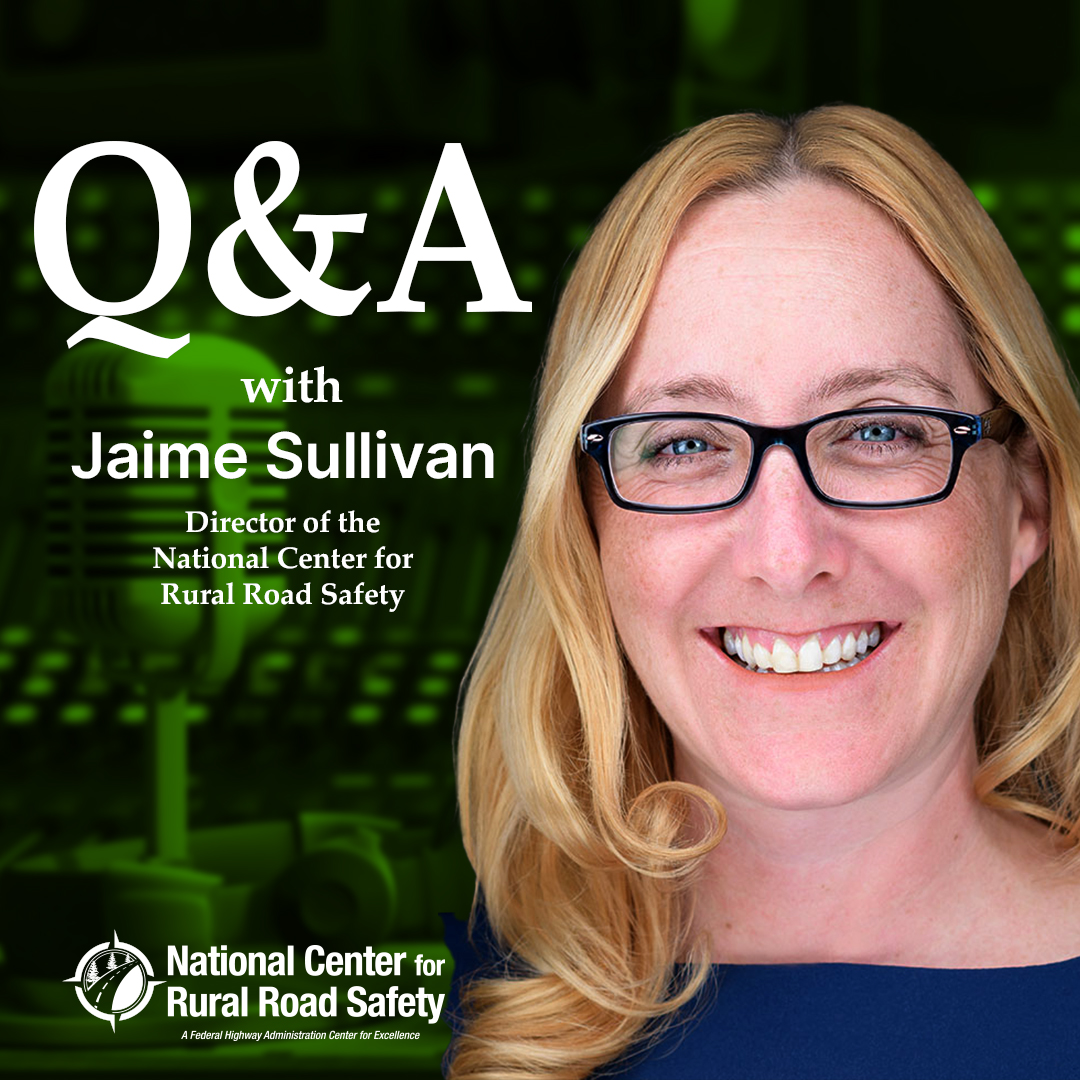Jaime Sullivan is the director of the National Center for Rural Road Safety. In this conversation, Kevin talks with Jaime about what the center is, its work, and the unique challenges faced by transportation practitioners in rural areas across the country. We’ve identified and summarized five prominent questions and responses from the interview.
Listen to the full episode and access resources here: https://ruralsafetycenter.org/home-safely-podcast/#sullivan
Q & A
Q: What is the National Center for Rural Road Safety, and what does it do?
A: The Center is known as the Rural Road Safety Hub. It focuses on training and technical assistance for rural transportation practitioners. The goal is to create, celebrate, and support rural champions who are working to make U.S. roads safer. The Center serves as a national hub to share best practices and connect rural agencies to resources and peers across the country.
Q: How serious is the rural road safety problem in the U.S.?
A: It’s a significant issue. Rural areas have a 1.5 times higher fatality rate than urban areas. In 2022, 41% of traffic fatalities occurred on rural roads—even though only 20% of the population lives there. With 68% of public road miles in rural areas, these crashes represent a disproportionate loss of life. Each statistic represents a person with a family, and ideally, that number should be zero.
Q: What makes rural roads more dangerous than urban roads?
A: Rural roads face unique challenges, such as:
- More single-vehicle rollovers and run-off-road crashes.
- Lower seatbelt use, higher speeds, and less lighting.
- Narrow lanes, limited or no shoulders, uncontrolled intersections, and unpaved roads.
- A mix of users—cars, farm equipment, motorcycles, buggies, and ATVs—all sharing the same roads.
Additionally, rural areas have fewer law enforcement officers and limited infrastructure for maintenance and communications.
Q: What is “post-crash care,” and why was it the focus of the 2025 Rural Road Safety Awareness Week?
A: Post-crash care is one of the five elements of the Safe System Approach, serving as the final safety net when crashes occur. It includes first responders, emergency medical services, and community preparedness to save lives after a crash.
In rural areas, these services face challenges like longer response times, poor communication networks, and the fact that EMS is not designated as an essential service in many states, limiting funding. This year’s theme, Big League Safety, celebrates first responders and raises awareness about improving post-crash care in rural communities.
Q: What resources and training does the Center offer to help rural agencies improve safety?
A: The Center offers several free programs and resources, including:
- The Road Safety Champion Program, a “Safety 101” training for anyone—from maintenance workers to public health professionals—to build baseline safety knowledge.
- Monthly webinars in partnership with Local Technical Assistance Programs (LTAPs).
- A biweekly training e-blast with upcoming safety events, grants, and resources.
- Collaboration with LTAPs across all states to extend training and technical support.
These programs help rural communities access the tools and peer support needed to reduce fatalities and make roads safer.
